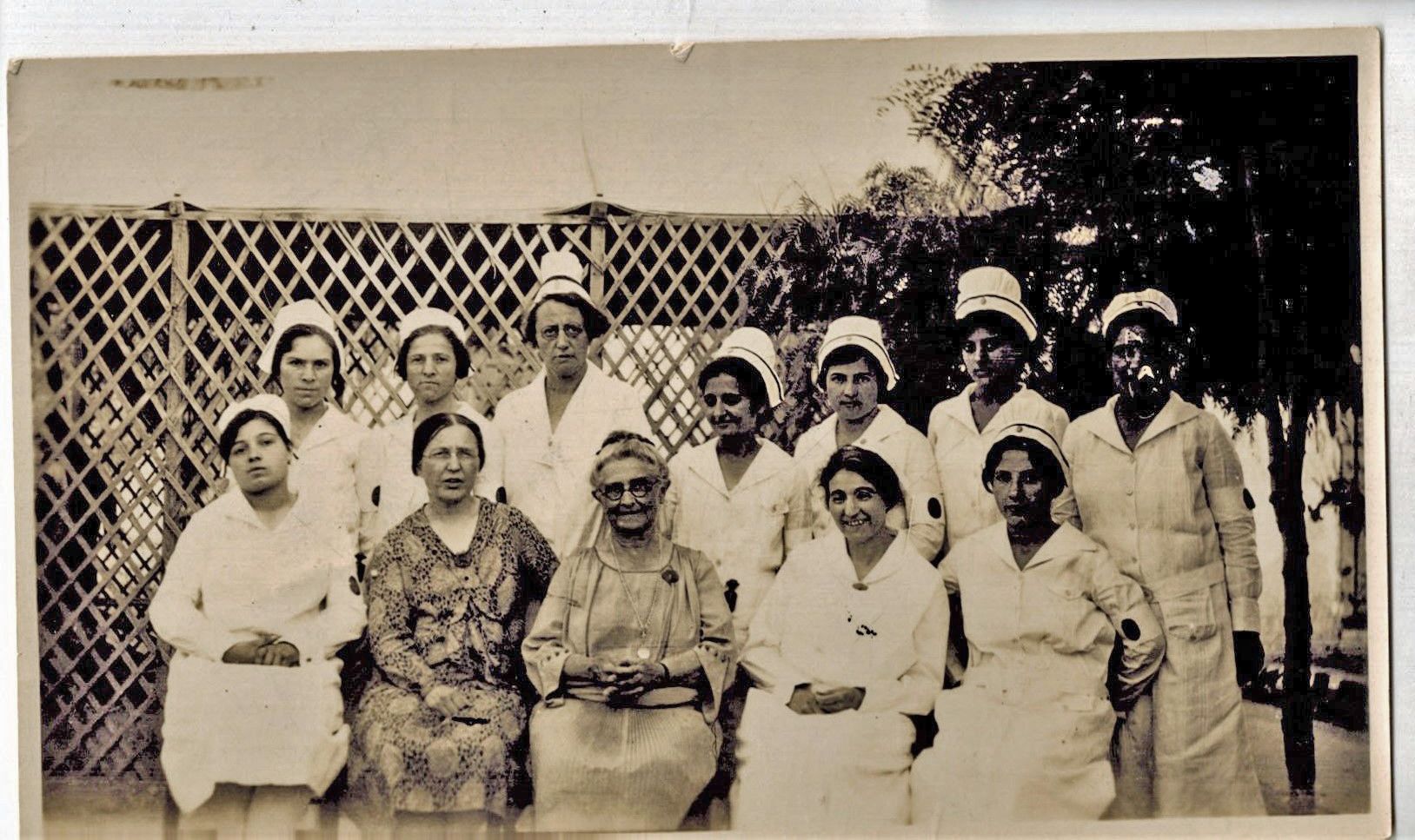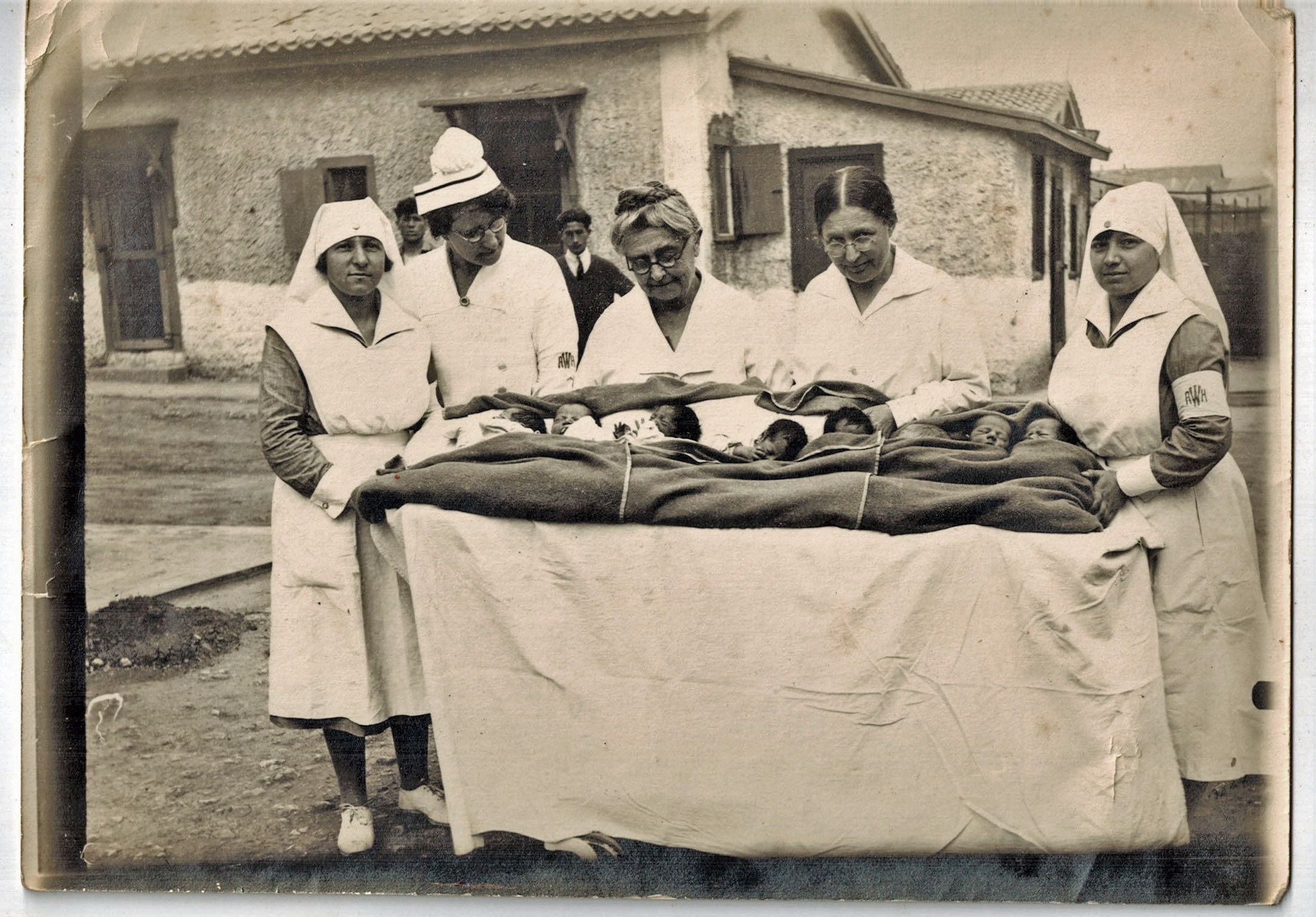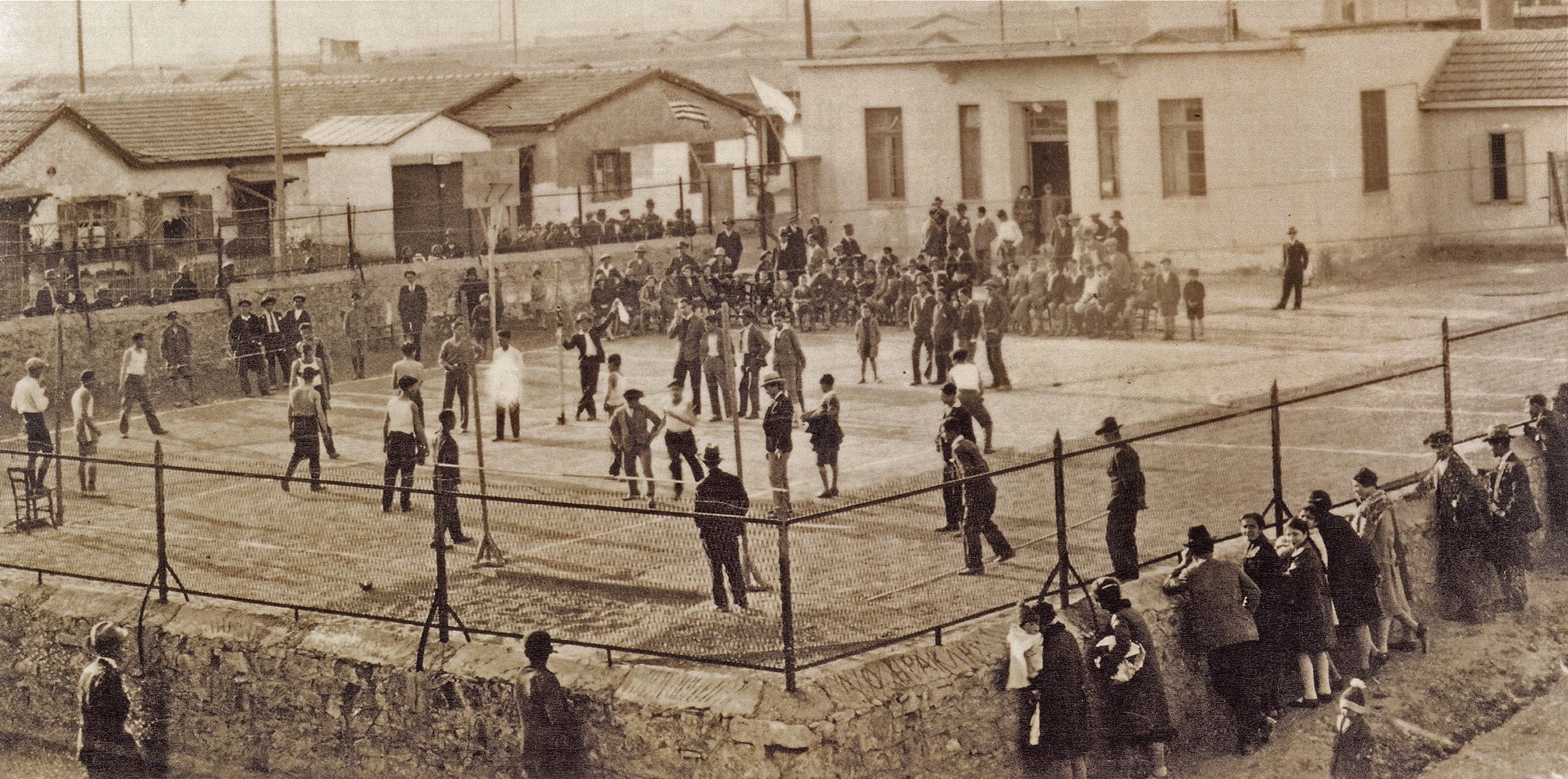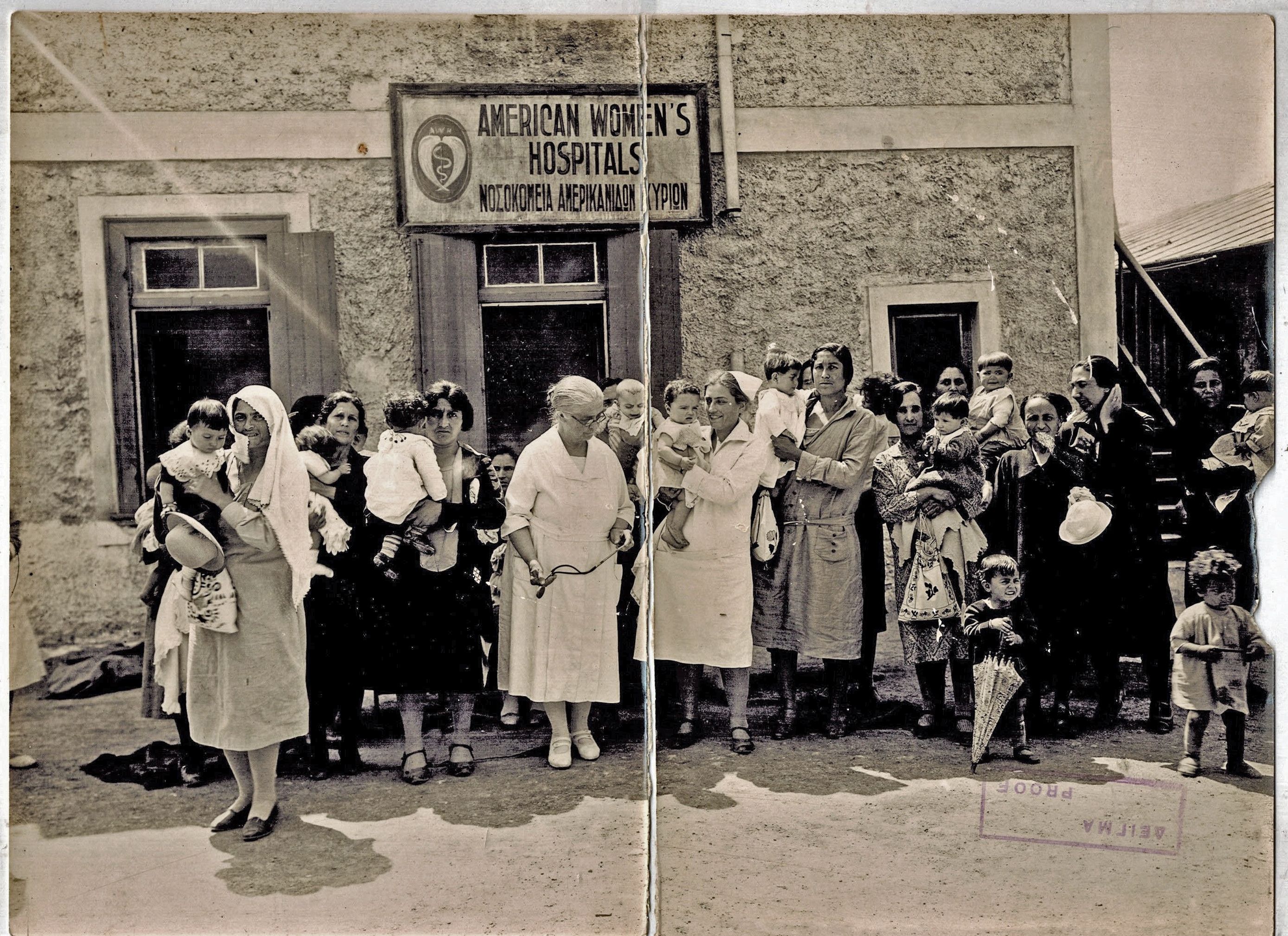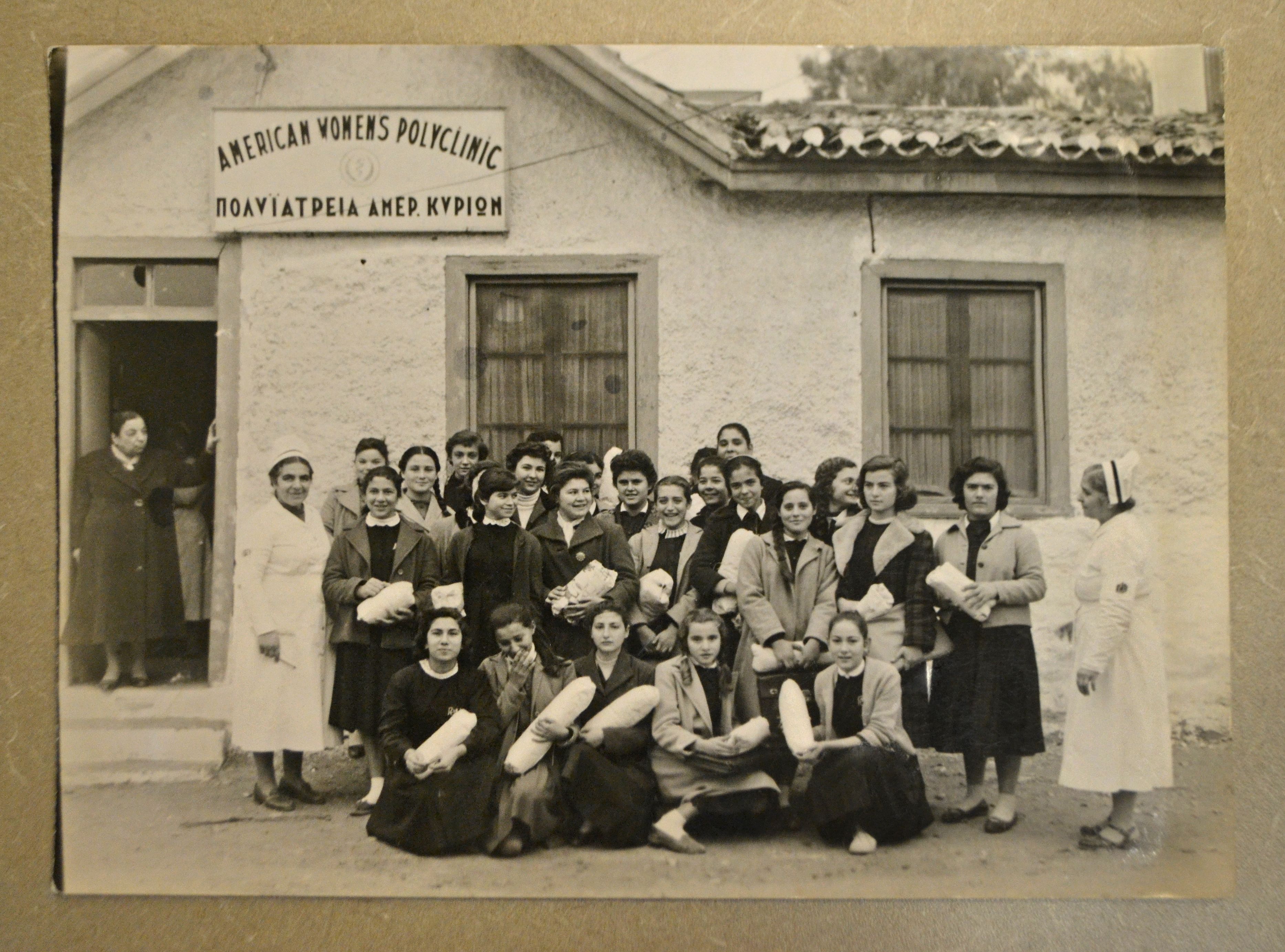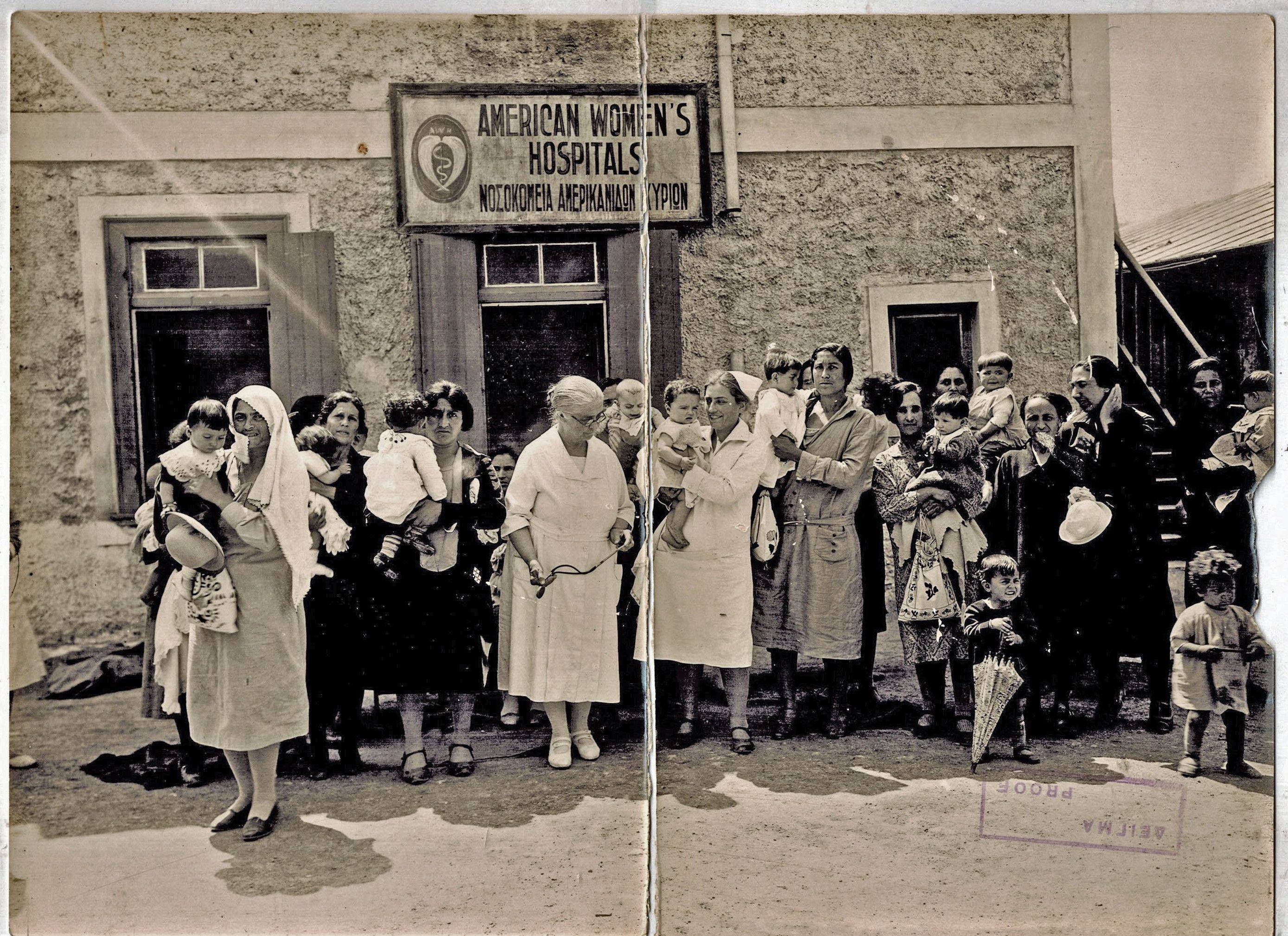The American Women’s Hospitals Organisation
Dr. Ruth A. Parmelee, Angenette Parry and Miss Emilie Williams, R.N. moved the organisation’s base of operations from Thessaloniki to Nea Kokkinia, invited by Henry Morgenthau, the president of the Refugee Settlement Commission. Their vision to establish a hospital and a nursing school came to fruition on Block 49 of the refugee settlement, co-funded by Near East Relief. These organisations, along with the American Red Cross, had also established similar units in other refugee settlements.
The American Women’s Hospital provided home visit services, outpatient, post-operative and hospital care, milk stations and a maternity clinic. In 1925, it only had an ophthalmologist and a single doctor for general medicine and all surgical and obstetric procedures. Five years later, the hospital had 4 doctors, a nurse and a 105-bed capacity. Over the next decade, the hospital expanded significantly. The Ministry of Welfare was an active participant in the hospital’s operation and was granted jurisdiction over it after the AWH Organisation withdrew from the settlement. The Ministry then proceeded to gradually limit the hospital’s offered services until it was eventually shut down. After 1970, the hospital’s land was used to build school facilities. Nowadays, Nikaia’s 2nd Secondary School is housed there, bearing the name of the settlement’s first teacher, Marianthi Skala.
Just a few metres to the north, on Block 84, delineated by the streets Kastamonis and Theiron, we find the ‘Georgios Amerikanos’ football field where the facilities of the American Club and the gym of the same name are also located. The Club has been organising educational and sports activities for the settlement’s young boys and girls for almost a century now.
The American Women’s Hospital and the Young Men’s Christian Association (YMCA) were two entities which provided relief to the residents of Nea Kokkinia, building infrastructure and creating opportunities for the residents of the nascent settlement. They offered practical support and transformed the residents’ living conditions by improving their day-to-day life. Today, the histories of these two organisations are not simply encapsulated in the memories and the references of the settlement’s older residents about being born in the American Women’s Hospital or learning English and basketball at the YMCA. They are a constant reminder of the essential aid the newcomers needed to cover their most basic needs.
A century later, some of these organisations, such as the UN Refugee Agency, the Red Cross, and Save the Children, became active in Greece once again, putting themselves at the forefront of managing the ‘refugee crisis’ of 2015. However, the treatment of these refugees by both the Greek state and humanitarian organisations was now very different. Even though they are barely 60,000 people, namely 5% of the 1.2 million refugees who arrived in Greece from 1922 to 1924, today’s refugees are still living in tents and containers, confined in camps outside the urban fabric and without any substantial aid with regards to their employment and housing rehabilitation or their integration into local communities.
Objects
